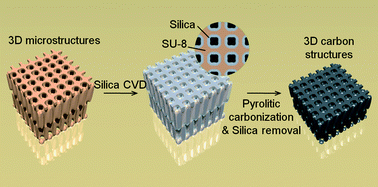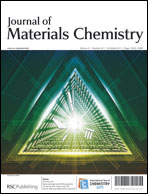Supported pyrolysis for lithographically defined 3D carbon microstructures†
Abstract
We present a facile and effective route for the fabrication of carbon microstructures by direct carbonization of polymeric photoresist patterns without distortion or collapse of the microstructure due to high-temperature


 Please wait while we load your content...
Please wait while we load your content...